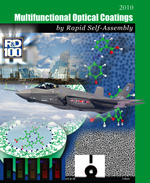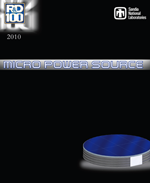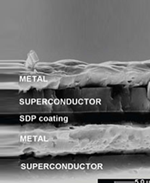
CANARY: Event Detection Software is a software package that performs online, multivariate event detection from networked sensor data. Employing statistical forecasting and classification algorithms, CANARY continuously analyzes time series signals for anomalous conditions. This unique software enables online contaminant event detection for time-critical decision making in both routine and emergency water quality assessments.
» Download (PDF, 3.5 MB)
» Watch video

Multifunctional Optical Coatings, a new technology that has been developed for optical coatings, involve the self-assembly of polymers to form nanostructured coatings with tailored properties. The process uses commercially available polymers, which are dispersed in common solvents, enabling easy and cost-effective routes to produce films through spin, dip, or spray coating in ambient conditions. These films possess physical properties approaching those of materials that are typically fabricated using expensive processes such as CVD and sputtering.
» Download (PDF, 2.2 MB)
» Watch video

Rapid Point-of-Care Medical Diagnostics is an innovative device that is a handheld, battery-powered, portable detection system capable of multiplex identification of a wide range of medically relevant pathogens and their biomolecular signatures — viruses, bacteria, proteins, and DNA — at clinically relevant levels. This detection occurs within minutes — not hours — at the point of care, whether that care is in a physician’s office, a hospital bed, or at the scene of a biodefense or biomedical emergency.
» Download (PDF, 1.9 MB)
» Watch video

Micro Power Source is a compact, highly miniaturized energy-harvesting (self-charging) power source encapsulated in a polymer coating. It functions by integrating a lithium-ion-based, solid-state battery with a thin photovoltaic (PV) collector. It is charged by an energy-harvesting PV device that is 10 μm thick, single-junction, 10-cell, and silicon (Si)-based. The entire system is environmentally sealed using a specially developed polymer coating.
» Download (PDF, 849 KB)
» Watch video

Solution Deposition Planarization (SDP), Superconductor Substrate Preparation Process This joint LANL-Sandia development prepares the metal substrate used in making superconducting wire. Compared with current manufacturing methods, SDP is simpler and less costly, yet it enables greater power density and increased physical strength. SPD also generates less toxic waste. The primary application of the SDP process will be in the fabrication of superconducting wire for power applications.
» View R&D 100 Award website article